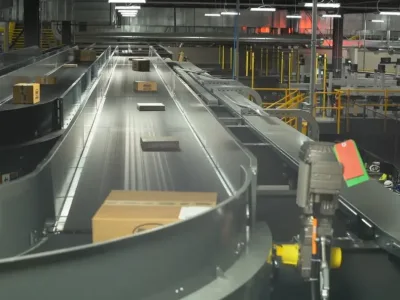
16 analog, MEMS and sensor startups to follow in 2016
As we commented in 2015 analog has taken back the “mojo” in electronics just as success in digital electronics appears to be a poisoned chalice; witness the difficult year suffered by Qualcomm despite market leadership in smartphone application processors (see When did analog steal digital’s mojo? and Qualcomm rejects company break up).
The newcomers into our list include companies active in analog design, signal processing, photovoltaics, image sensing, radar and foundry manufacturing.
What follows are 16 recently-formed private companies we feel are worth keeping track of in 2016 listed in alphabetical order.
Next: From Indiana to India
Analog Computing Solutions Inc. (Bloomington, Indiana), founded in 2013, is developing a neural network IC that monitors sensor data for key events and thereby allows microcontrollers to stay in sleep mode until required. www.analogcomputingsolutions.com
(See Startup plans neural network front-end for sensor systems).
Cambridge CMOS Sensors Ltd. (Cambridge, England) was set up in 2008 to form a hot plate metal oxide (MOX) based sensor that reacts with various gas molecules. The company came to market with the CCS800 product family using standard CMOS technology. The use of a membrane provides fast response times due to the ability to heat the micro-hotplate quickly. www.ccmoss.com
(See Swann to chair Cambridge CMOS Sensors).
Chirp Microsystems Inc. (Berkeley, Calif.) was founded in 2013 to commercialize a low-power ultrasonic gesture recognition technology intended for use in mobile and wearable devices. Developed by a team of researchers from BSAC (Berkeley Sensor and Actuator Center) and SwarmLAB at UC Berkeley and UC Davis, Chirp uses MEMS ultrasound transducers to detect and track a user’s gestures in 3D space. www.chirpmicro.com
Chronocam AS (Paris, France), founded in 2014, develops machine vision sensors based on asynchronous pixel sensor technology. Such systems can be optimized for low power, high dynamic range and low data rate rather than for resolution and a superior human-viewable image. www.chronocam.com
(See Asynch image sensor boosts machine vision).
Cricket Semiconductor Pvt. Ltd. (Bengaluru, India), founded in 2014, aims to establish India’s first high-volume production wafer fab focused on analog and power technologies. The company has signed a memorandum of understanding with the state of Madhya Pradesh and has plans to locate the fab on an industrial park on the outskirts of the city of Indore. www.cricketsemiconductor.com
(See Indian wafer fab will be specialty foundry).
Next: From China to San Jose
Gpixel Inc. (Changchun, China) develops high-end CMOS image sensor solutions for industrial, medical and scientific applications. Founded in 2012, the company produces standard off-the-shelf image sensors, as well as customer-designed products. In 2014 Gpixel worked with foundry Tower Semiconductor Ltd. to produce a record-setting 150-Mpixel full-frame CMOS image sensor. www.gpixelinc.com
(See Gpixel brings BSI to scientific CMOS image sensors).
Hanking Electronics (Liaoning) Co. Ltd. (Shenyang, China), founded in April 2011, is a MEMS subsidiary of the Hanking Industrial Group. Hanking Electronics focuses on developing, fabrication and marketing MEMS products and related electronics components. It provides customers with design and development, fabrication processing, volume manufacturing, MEMS foundry services, MEMS sensors, MEMS actuators, ASIC, MEMS technology and application consulting. www.hkmems.com
Intento Design SA (Paris, France), an EDA company founded in spring 2015 by Farakh Javid, chief technology officer, provides analog and mixed-signal circuits as IP that can automatically scaled for performance and migrated between manufacturing processes. www.intento-design.com
(See Analog design automation startup gets backing).
InVisage Technologies Inc. (Menlo Park, Calif.) has launched a 13-Mpixel sensor that uses a quantum-dot film rather than silicon to capture images. The company is shooting for the smartphone market to begin with but claims it has the beating of CMOS image sensors in terms of many specifications and therefore in most of if not all applications. www.invisage.com
(See Quantum-dot image sensor launch threatens silicon).
MEMSensing Microsystems Co. Ltd. (Suzhou, China), founded in 2007, has established microphone and pressure sensor product lines. Its customers include consumer electronics, industrial control, medical and automotive electronics and it has teamed up with Semiconductor Manufacturing International Corp. as its foundry partner. www.memsensing.com
(See China claims world’s smallest 3-axis accelerometer).
NextInput Inc. (San Jose, Calif.), founded in 2012, is a spin-off from Georgia Institute of Technology to commercialize a pressure-sensitive method of interfacing with electronics devices. It works with multiple sensors placed under a display surface and offers a better solution than capacitive touch, the company claims. The company gained a CEO and a substantial Series A round of funding in 2015. www.nextinput.com
(See China’s GoerTek, Intel back force-sensor startup).
Next: From Eindhoven to Boston, Mass.
Omniradar NV (Eindhoven, The Netherlands), founded in 2011, is bringing to market 60GHz radar ICs for application in vehicle safety, but also to be used as precision sensor for personal security, industrial automation or environmental monitoring. www.omniradar.com
(See Dutch startup shrinks 60GHz radars, increases precision).
Seamless Devices Inc. (San Jose, Calif.), a startup spun out of Columbia University, New York in 2014 has introduced its first products, a set of analog front-end circuits for use in LTE, WiFi and microwave applications. They are based on switched-mode operational amplifier circuits. www.seamlessdevices.com
(See Startup launches switch-mode op amps, ADCs).
Senodia Technologies Co. Ltd. (Shanghai, China), founded in August 2008, was one of the first Chinese MEMS gyroscope providers and has expanded its offering to a full suite of inertial MEMS 6-axis and 9-axis solutions and applications for smart phones. www.senodia.com
Sol Chip Ltd. (Haifa, Israel), founded in 2009, has developed a chip scale photovoltaic energy harvester which can provide voltages at between 0.75V and 9V useful for autonomous low-power electronic systems. The PV cell can produce 3.3-milliwatts in full daylight and up to 20-microwatts under office lighting. www.sol-chip.com
(See Chip-scale photovoltaics startup raises funds).
Vesper Technologies Inc. (Boston, Mass.) launched its first branded product in 2015, the VM101 analog output MEMS microphone with a 68dB typical signal-to-noise ratio. Expect more of the same in 2016. www.vespermems.com
(See Vesper launches piezoelectric MEMS microphone).
Related links and articles:
EE Times Silicon 60: 2015’s Startups to Watch
15-in-15: Analog, MEMS and sensor startups to watch in 2015
 If you enjoyed this article, you will like the following ones: don't miss them by subscribing to :
eeNews on Google News
If you enjoyed this article, you will like the following ones: don't miss them by subscribing to :
eeNews on Google News




